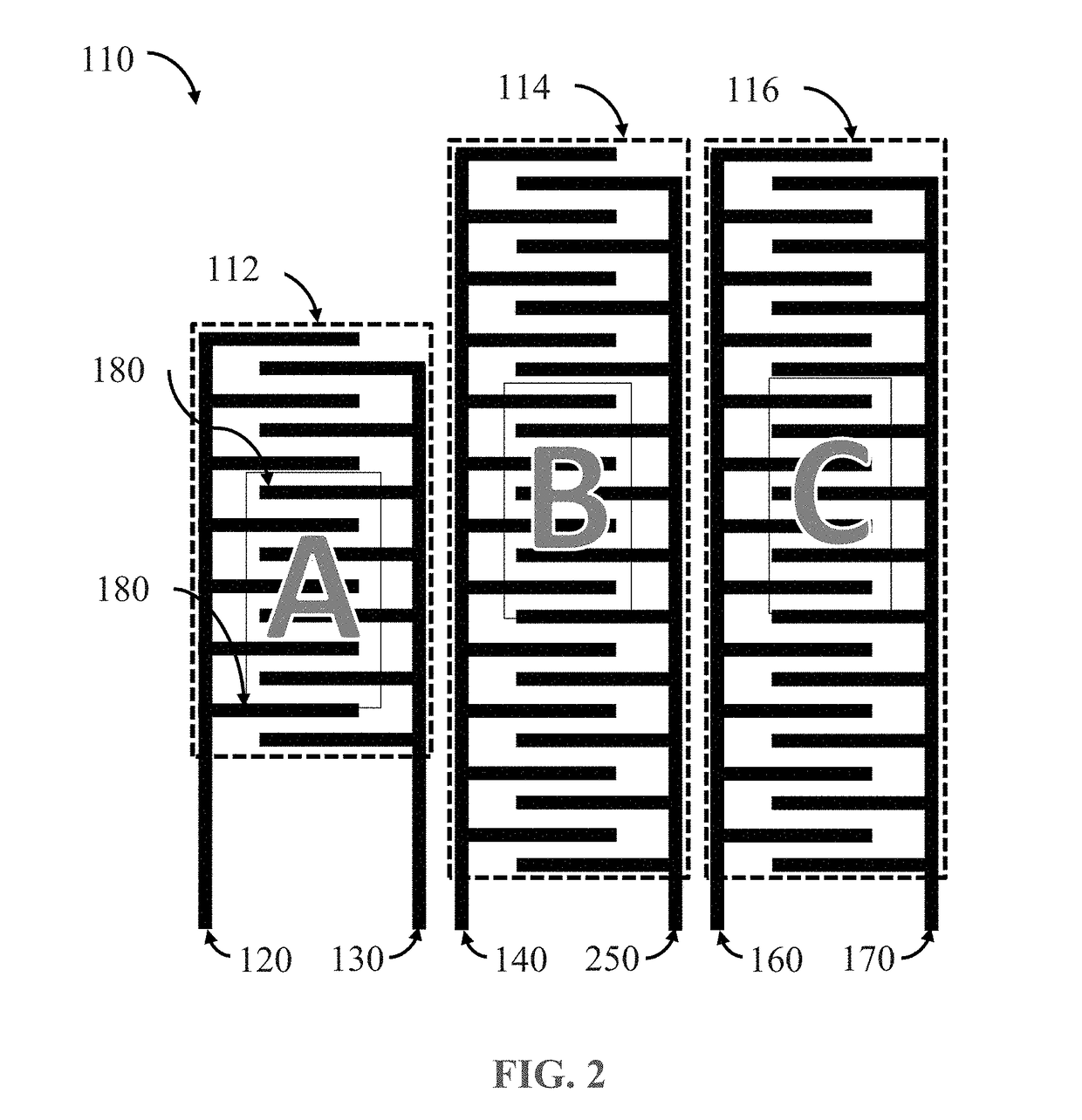Moisture detection and notification system
a technology of moisture detection and notification system, applied in the field of system and method for detecting and signaling the presence of moisture, can solve the problems of pressure ulcers, pressure injuries and bedsores, pressure ulcers, decubitus ulcers, etc., and place a significant financial burden on u.s. healthcare resources
- Summary
- Abstract
- Description
- Claims
- Application Information
AI Technical Summary
Benefits of technology
Problems solved by technology
Method used
Image
Examples
Embodiment Construction
[0025]FIG. 1 generally depicts one embodiment of a moisture detection system (10). The system comprises a sensor pad (20), which itself comprises a first substrate (21) and a plurality of conductive leads (22, 23) disposed on the first substrate and defining at least one zone (26), each zone defined by an area in which fingers (24) of one conductive lead (22) are interdigitated with fingers of another conductive lead (23), and a coupling unit (30) coupled to at least two conductive leads.
[0026]In preferred embodiments, the conductive leads are formed in a single layer, via known fabrication techniques. However, other embodiments that utilize multiple deposition layers are also envisioned.
[0027]This embodiment depicts a single zone having a very simple pattern of conductive leads. When designing these types of systems, the first consideration is what coverage area is required. For example, a wheelchair seat or chair seat might only require a 20 inch×15 inch coverage while a bed might...
PUM
| Property | Measurement | Unit |
|---|---|---|
| mean impedance | aaaaa | aaaaa |
| mean impedance | aaaaa | aaaaa |
| mean impedance | aaaaa | aaaaa |
Abstract
Description
Claims
Application Information
 Login to View More
Login to View More - R&D
- Intellectual Property
- Life Sciences
- Materials
- Tech Scout
- Unparalleled Data Quality
- Higher Quality Content
- 60% Fewer Hallucinations
Browse by: Latest US Patents, China's latest patents, Technical Efficacy Thesaurus, Application Domain, Technology Topic, Popular Technical Reports.
© 2025 PatSnap. All rights reserved.Legal|Privacy policy|Modern Slavery Act Transparency Statement|Sitemap|About US| Contact US: help@patsnap.com



